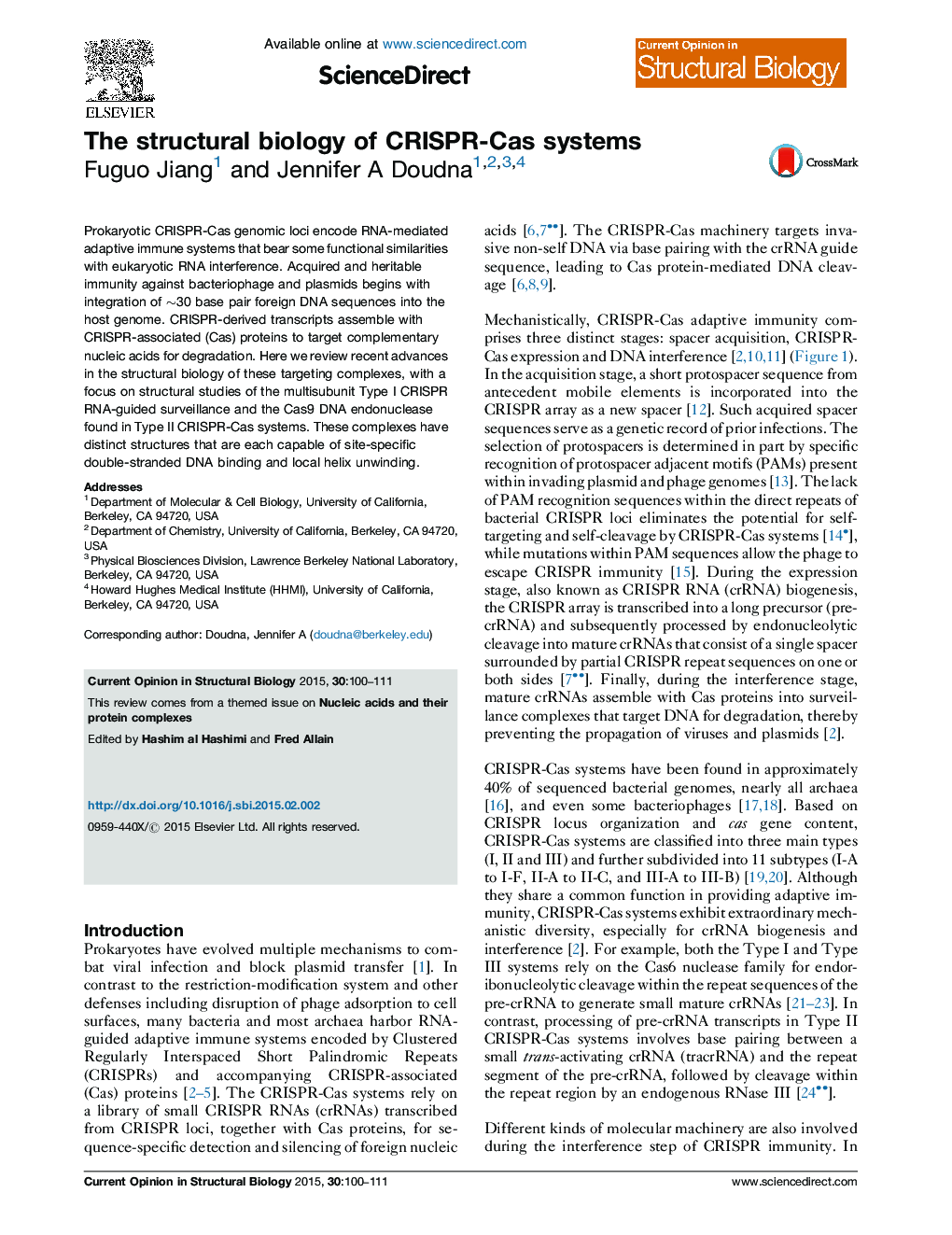| Article ID | Journal | Published Year | Pages | File Type |
|---|---|---|---|---|
| 8320018 | Current Opinion in Structural Biology | 2015 | 12 Pages |
Abstract
Prokaryotic CRISPR-Cas genomic loci encode RNA-mediated adaptive immune systems that bear some functional similarities with eukaryotic RNA interference. Acquired and heritable immunity against bacteriophage and plasmids begins with integration of â¼30 base pair foreign DNA sequences into the host genome. CRISPR-derived transcripts assemble with CRISPR-associated (Cas) proteins to target complementary nucleic acids for degradation. Here we review recent advances in the structural biology of these targeting complexes, with a focus on structural studies of the multisubunit Type I CRISPR RNA-guided surveillance and the Cas9 DNA endonuclease found in Type II CRISPR-Cas systems. These complexes have distinct structures that are each capable of site-specific double-stranded DNA binding and local helix unwinding.
Related Topics
Life Sciences
Biochemistry, Genetics and Molecular Biology
Biochemistry
Authors
Fuguo Jiang, Jennifer A Doudna,
